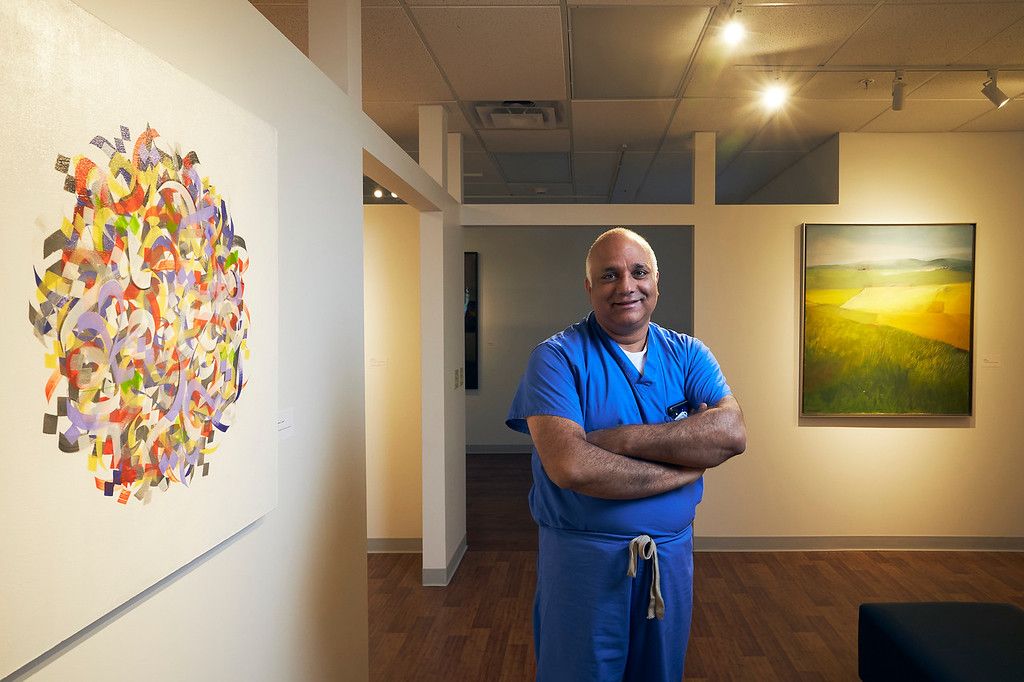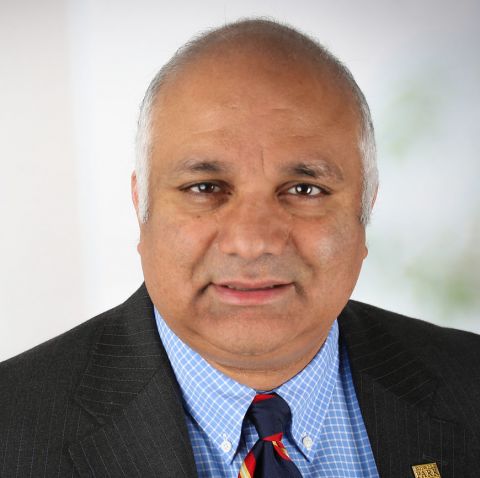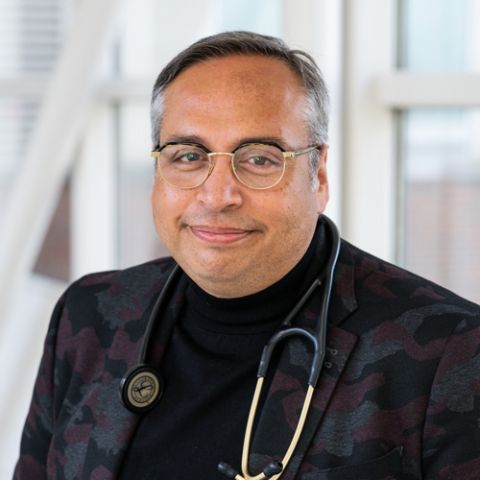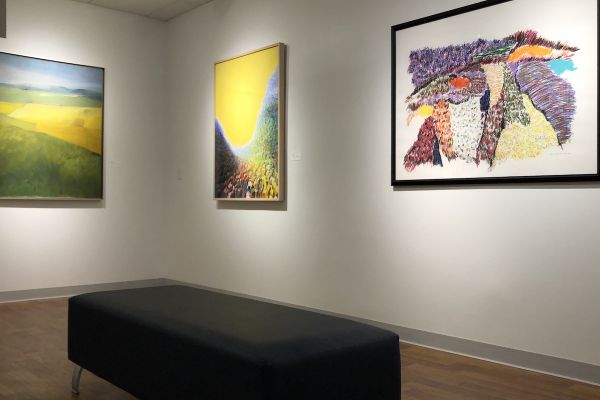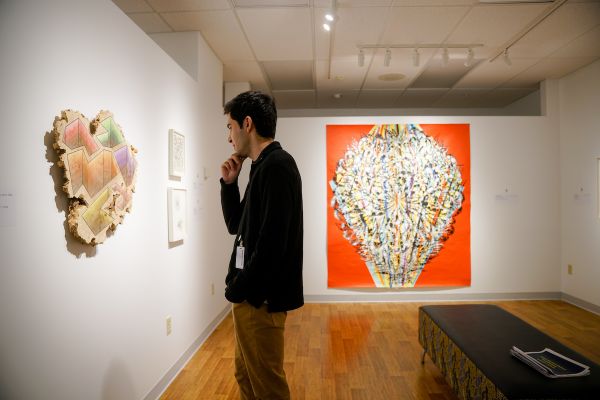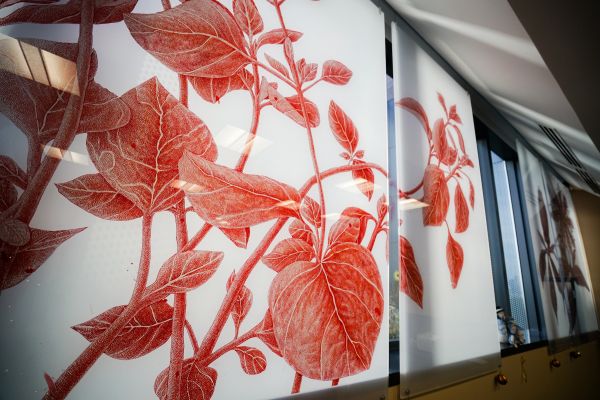Hope unleashed for the survival journey
In its myriad forms, art permeates each of our lives, every day, in ways we are not always aware. At Roswell Park Comprehensive Cancer Center, exposure to and interaction with visual art in particular is recognized — and championed — as an essential part of its therapy to “unleash the healing power of hope.”
“Art is a form of expression of what you are, what you were and what you aim to be,” says Khurshid Guru, MD, Director of Robotic Surgery and Chair of the Department of Urology at Roswell Park, who has long realized the profound connection between visual art, hope and healing.
“Art doesn’t just give you hope,” he says. “I think art helps you take the first step toward hope, and it takes a first step because, guess what? The first step in a long healing journey is in your mind.”
A celebrated guru of innovation, he co-invented a simulator to help surgeons hone their robotic surgery skills before operating on a patient and developed a “marionette stitch” (yes, inspired by the puppets) to give surgeons better access to organs they need to reach. Dr. Guru also is the visionary responsible for 2021 installation of Roswell Park’s Art Heals Gallery. Aware of the intrinsic connection between eyes and the brain, he theorized that exposure to art in a dedicated hospital gallery could help people embark on a challenging cancer survival journey.
Art recalibrates the hope needed for healing
“Any kind of healing needs a mind which is relaxed and at its optimal. The body will only do what the mind does, and art kind of recalibrates you to the basics, ” he maintains, citing the probable mental state of someone confined to a hospital bed, looking out the window or flipping through television channels every day, feeling that, for them, the world has stopped because they are sick.
“In comparison, you look at art and you think, ‘what do I need to do to recalibrate?’ You start thinking ‘there’s a lot more when I heal, and there’s a reason why I should heal,'” he explains. “Art doesn’t heal your wound or cure your cancer, but it mentally heals your soul and your spirit.”
As a scientist, Dr. Guru wanted proof of this theory. He designed a study using the new Art Heals Gallery to determine if his theory was valid. The clinical trial concluded that dedicated exposure to art is associated with improved hope, anxiety and mental well-being of patients after major oncologic procedures and surgery.
Donations to Roswell Park through the Roswell Park Alliance Foundation enabled the study and funded a portion of the art gallery.
“When we were looking for studies, I couldn’t find anything that did that in a validated form. We used the highest form of study, which is a randomized control trial, and used the validating question of mental health and well-being. This is the first study that really proves this can happen,” says Dr. Guru, who was the senior corresponding author. “Art helps you get better mental health.”
As a surgeon, however, he understands there is a definitive element of artistry to his profession: “In surgery, everything is visual — how an organ looks, how an organ sits, how God made it. You basically learn the miracles of how God made art and this art form becomes your visual literacy. You need to have not just mathematical knowledge or physical knowledge of the body, but you need to have visual senses. It’s an art form.”
Support services for patients
A cancer diagnosis can be a difficult and overwhelming experience for patients and their caregivers. We are here to help.
Learn moreArt helps doctors, nurses and support staff decompress
Francisco Hernandez-Ilizaturri, MD, Roswell Park Director of Lymphoma Research and Professor of Oncology, has been a passionate and serious art collector for more than 20 years and his office is filled with artwork of all mediums. He also is the founder of Buffalo Art Movement (BAM!), which he established to support local artists.
“I think it’s very hard to define art because it’s a word we use to define something that creates a reaction. It is basically something that triggers an emotion, something that provokes a response or a thought,” Dr. Hernandez says. “I think over the last couple of decades the medical field has begun to appreciate how art can be used to help people going through hardship because of medical care.”
He concurs with Dr. Guru that exposure to art helps patients forget some of the medical problems they are facing and allows them to think of other things. Both doctors agree that while the classic visual arts are often considered the most popular form for inducing hope, reducing anxiety and improving mental well-being in people navigating through serious illnesses such as cancer, music, theater, film, multimedia, performance and other art forms can also help the healing process.
“When you contemplate art, you can elect to take action or not. You can use the action of contemplating art to reflect and gain strength within yourself,” Dr. Hernandez maintains, adding that exposure to art not only helps Roswell Park patients, but allows Roswell Park nurses, doctors and scientists to decompress from the stress of their daily work.
“I use art as a tool that allows me to somehow have another dimension in my life that is maybe less stressful than oncology,” he says.
An inspiration for better mental health
In the Art Heals Gallery, Roswell Park Art Coordinator William Vogel curates exhibits that uplift and inspire patients, staff, family and caregivers. He also stewards the Patient Art Cart that allows patients to choose a painting that inspires them to be mounted in their hospital room, and offers patients art activity kits.
“We try to use art as a tool that promotes healing and positive feelings,” Vogel says.
